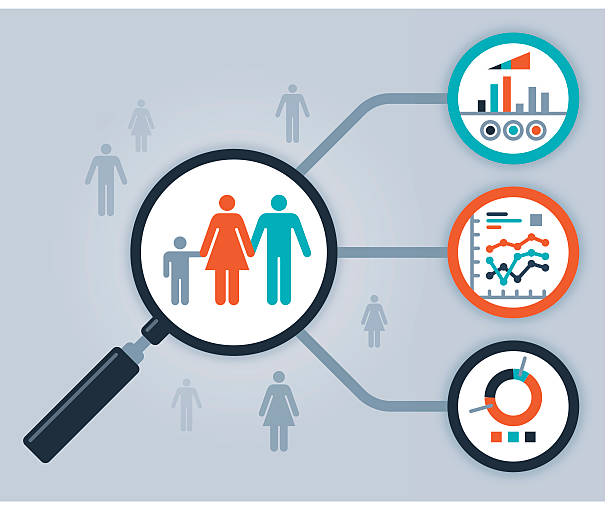Explore the advantages of marketing segmentation in this comprehensive guide

Introduction
Marketing segmentation has become the backbone of many successful marketing strategies. It’s like having a crystal ball that lets businesses peer into their customers’ desires, needs, and habits. But what exactly is this magical tool? Let’s dive in!
What is Marketing Segmentation?
At its core, marketing segmentation is the process of dividing a broad market into smaller, more manageable groups based on certain characteristics. These could be anything from age, gender, interests, buying habits, or location.
– Definition and Basics
It’s a bit like sorting out a mixed bag of candies by colour. Imagine trying to market a product to the entire bag of candies when only the green ones might be interested!
– Evolution Over Time
Marketing segmentation isn’t a new concept, but with the rise of data analytics and advanced tech, it’s become more sophisticated and effective. Gone are the days of shooting in the dark.
Why Use Marketing Segmentation?
Businesses large and small have realised the transformative power of segmentation. Here’s why:
– Increasing Sales
Targeted campaigns mean better conversion rates. It’s that simple. By knowing who your audience is, you can tailor your message to resonate with them.
– Enhancing Customer Loyalty
When customers feel you “get” them, they’re more likely to stick around. Personalised marketing feels more genuine, creating trust.
– Efficient Resource Allocation
No more wasting money on broad campaigns hoping they stick. Segmentation ensures you spend resources on what works.
– Tailored Marketing Messages
Ever received an email that felt like it was just for you? That’s segmentation at work.
– Competitive Advantage
In the crowded marketplace, standing out is crucial. By segmenting, you can offer unique value propositions.
Types of Marketing Segmentation
There are various ways to slice and dice your market. Here are the main ones:
– Geographic Segmentation
Dividing the market based on location. Think regional promotions or localised advertisements.
– Demographic Segmentation
Sorting customers by age, gender, income, education, and more. It’s one of the most commonly used strategies.
– Psychographic Segmentation
This deals with lifestyle, behaviour, and personality. Are your customers adventurers or homebodies?
– Behavioral Segmentation
Looking at the way customers interact with your business. For instance, are they repeat buyers or one-time shoppers?
The Magic Behind Successful Segmentation
It’s not just about dividing your audience; it’s about doing it right.
– Understand Your Audience
Listen to them. Surveys, feedback forms, and social media are gold mines of information.
– Using Technology and Tools
Modern segmentation is powered by tech. From data analytics tools to AI-driven platforms, the right tech can work wonders.
– Periodic Review and Adjustments
The market changes. So should your segmentation strategies. Regularly reassess and adjust.
Steps to Implement Segmentation
Ready to tap into the power of segmentation? Here’s how:
– Data Collection
Gather information about your customers. Purchase history, feedback, and online behaviour are key.
– Data Analysis
Crunch the numbers. Identify patterns and trends.
– Segment Creation
Based on your analysis, create distinct segments.
– Marketing Strategies for Each Segment
Craft unique campaigns for each segment. Tailored messages have higher success rates.
– Monitor and Modify
Keep an eye on performance metrics. Modify strategies if needed.
The Dark Side: Pitfalls to Avoid
Even the best tools can lead to disasters if used incorrectly. Watch out for:
– Over-segmentation
Too many segments can dilute your efforts and confuse your audience.
– Ignoring Segments
All segments are crucial. Ignoring even one can lead to missed opportunities.
– Being Static
The market evolves. Ensure your segmentation strategies do too.
Marketing Segmentation Success Stories
Real businesses have witnessed real success thanks to segmentation.
– Case Study 1: A Fashion Giant’s Strategy
A renowned fashion brand used segmentation to craft region-specific collections, leading to a 25% boost in sales.
– Case Study 2: A Tech Company’s Triumph
By segmenting its audience based on tech-savviness, a tech firm was able to offer tailored tutorials, resulting in increased product adoption.

Frequently Asked Questions
- What are the benefits of marketing segmentation?
It offers multiple benefits like increased sales, customer loyalty, efficient resource allocation, and a competitive edge.
- How often should businesses review their segmentation strategies?
Regularly. At least once a year, but more frequent reviews can be beneficial based on market changes.
- Is marketing segmentation expensive?
It can be, especially with high-end tech tools. However, the ROI often justifies the cost.
- Can small businesses benefit from segmentation?
Absolutely! In fact, for small businesses, it can be even more beneficial as resources are limited.
- Is it possible to over-segment?
Yes, over-segmenting can dilute marketing efforts and confuse audiences.
- How does technology play a role in segmentation?
Modern tech tools, especially data analytics and AI, have revolutionised segmentation, making it more accurate and effective.
Conclusion
Marketing segmentation isn’t just a fancy term; it’s a powerful tool that, when used right, can propel a business to unprecedented heights. By understanding and catering to specific audience segments, businesses can craft resonating messages that convert. So, if you’re not segmenting, you’re missing out. Jump on the bandwagon and see the magic unfold!
External Links/ Sources:
Market Segmentation: Definition, Example, Types, Benefits
What Is Market Segmentation? How it Works, Careers, and More
